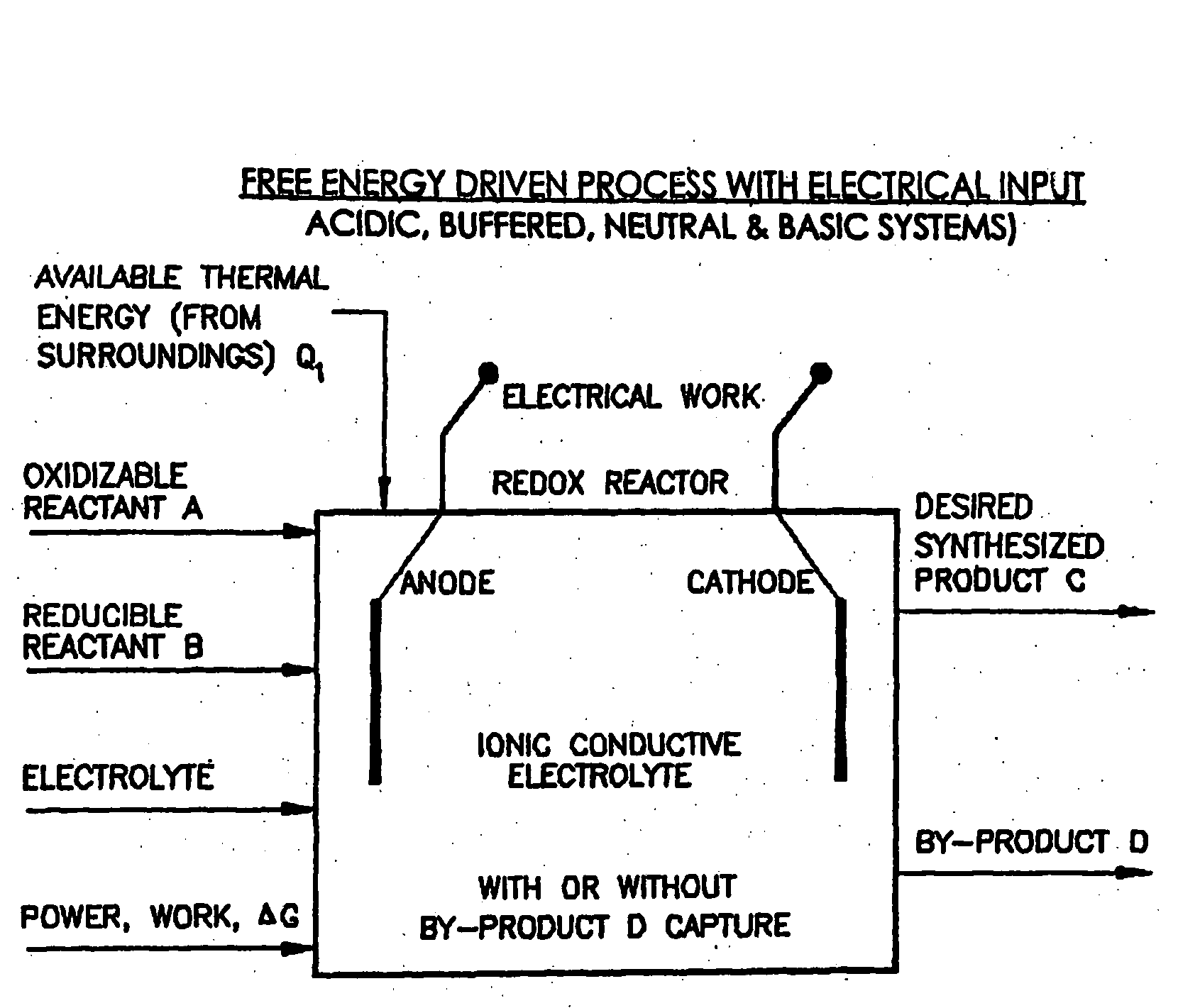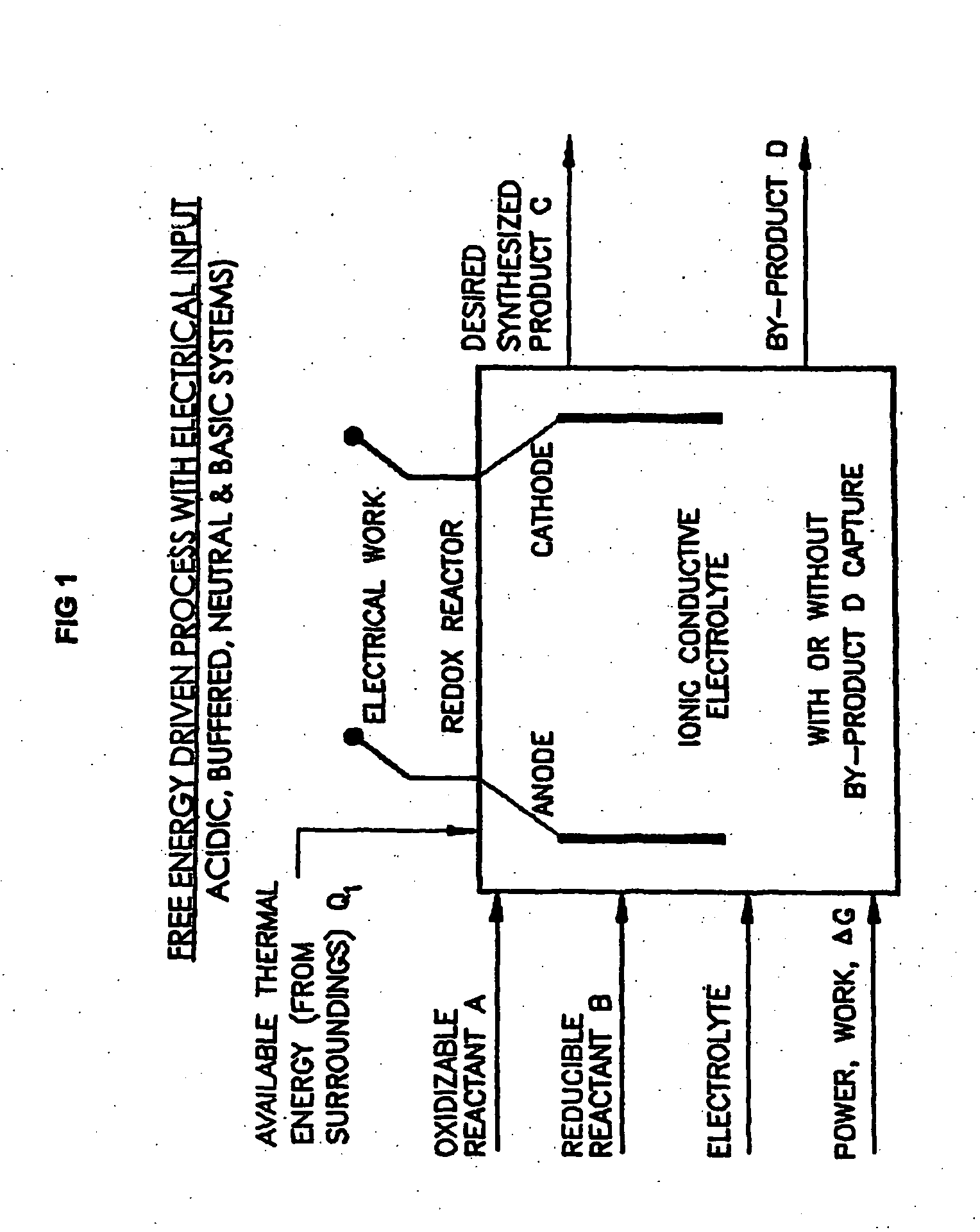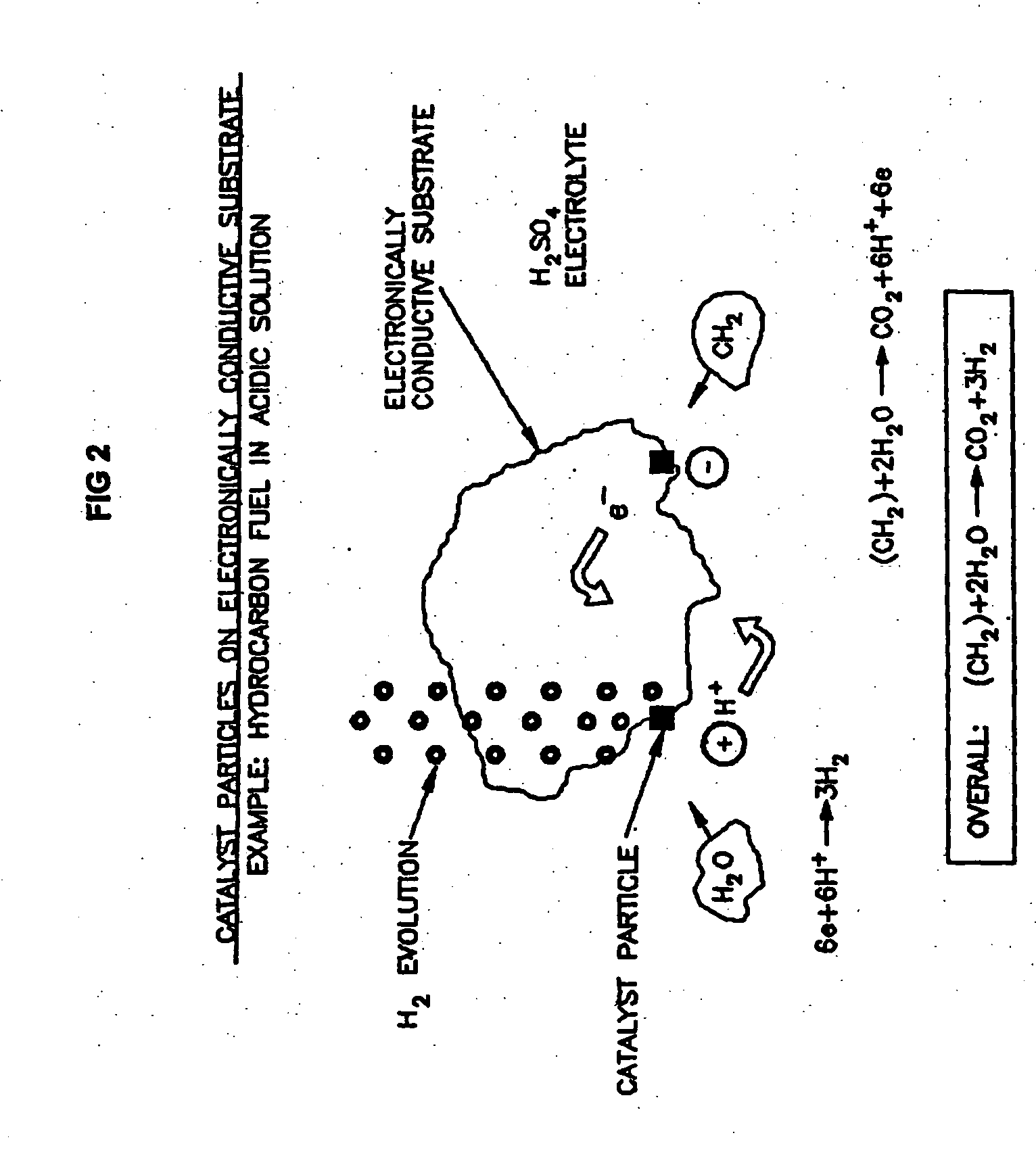Efficient Production of Fuels
a fuel and production technology, applied in the field of fuel production efficiency, can solve the problems of insufficient thermal energy input for the desired reaction, unsatisfactory chemical reactions that may occur in parallel with the target reaction, draining some thermal energy input, etc., and achieve the effect of facilitating the efficient production of fuel
- Summary
- Abstract
- Description
- Claims
- Application Information
AI Technical Summary
Benefits of technology
Problems solved by technology
Method used
Image
Examples
example 1
[0085]Experiments were conducted relating to reforming methanol to produce hydrogen in the presence of an electrolyte at high pH. As illustrated schematically in FIG. 6, a one-liter batch reactor was constructed to allow for the insertion of oxidizable reactant, reducible reactant, electrolyte and electron transfer material. The reactor was surrounded by a block heater to transfer heat to the solution in the reactor through conduction. In the following experiments, the oxidizable reactant was methanol and 45% wt KOH in water was used as a combined reducible reactant and electrolyte. Various electron transfer materials (with or without catalyst(s) present) in the form of powders, flakes and foam were used as the electron transfer materials. The synthesized hydrogen accumulated in the void space above the solution. The pressure inside the reactor was measured and used to calculate the hydrogen generation rate expressed as standard liters per hour-gram (SL / hr-g) of electron transfer ma...
example 2
[0086]In this example the same experimental setup as described above was used including 250 ml 45% KOH and 40 ml methanol as the fuel. However, the catalyst was changed to Raney Nickel® 2800. The effect of temperature on the hydrogen generation rate is also illustrated in FIG. 8. Testing up to 200° C., the hydrogen, generation rate is again exponentially proportional to the temperature, although the production rate is reduced compared to the catalyst in Example 1.
example 3
[0087]Further experiments were conducted to determine the effect of pH on the hydrogen generation rate and as well as the composition of the product gas. These experiments were conducted 200° C. and the concentration of hydroxide was altered to vary the pH; the catalyst was supported platinum, as described in Example 1. As shown in FIG. 9, the generation rate of hydrogen is five to six times higher in the concentrated alkaline solution than in diluted low pH solutions.
[0088]The effect of pH on amount of by-product CO2 gas that is mixed with desired product H2 for the same, reactants and temperature as shown in FIG. 10. At pH of 7 and 10 more than 20% of the product gas was CO2, whereas at pH of 14.7 and 15, product H2 gas was analyzed and it did not contain any CO2.
[0089]FIG. 11 illustrates the results for the synthesis of hydrogen from methanol and water in KOH electrolyte using various catalysts as electron transfer materials enclosed in the 1-liter batch reactor illustrated in FI...
PUM
| Property | Measurement | Unit |
|---|---|---|
| temperature | aaaaa | aaaaa |
| temperature | aaaaa | aaaaa |
| temperature | aaaaa | aaaaa |
Abstract
Description
Claims
Application Information
 Login to View More
Login to View More - R&D
- Intellectual Property
- Life Sciences
- Materials
- Tech Scout
- Unparalleled Data Quality
- Higher Quality Content
- 60% Fewer Hallucinations
Browse by: Latest US Patents, China's latest patents, Technical Efficacy Thesaurus, Application Domain, Technology Topic, Popular Technical Reports.
© 2025 PatSnap. All rights reserved.Legal|Privacy policy|Modern Slavery Act Transparency Statement|Sitemap|About US| Contact US: help@patsnap.com



